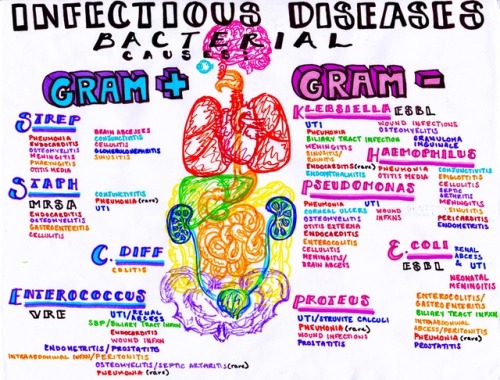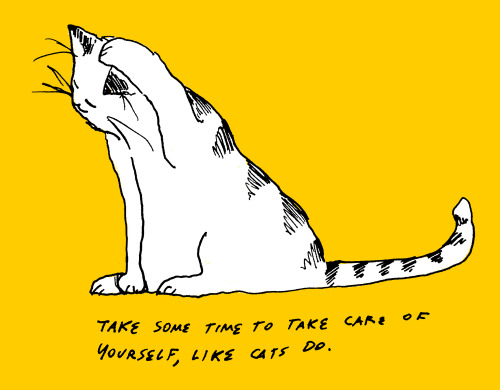The World Is Like A Video Game. Each Thing You Do Affects Your Stats. Punch Something? Your Strength
The world is like a video game. Each thing you do affects your stats. Punch something? Your strength increases. Get hit? Your defence increases. Run? You get faster. As long as you do something, you can get better at it. Write about the person who devoted his life to raising his blinking stat.
More Posts from Ourvioletdeath and Others
as you get older, you realize that you’re not always right and there’s so many things you could’ve handled better, so many situations where you could’ve been kinder and all you can really do is forgive yourself and let your mistakes make you a better person.
You and your fellow biologists setout to find the beast: a six ton monster with spikes and a giant tentacle growing out of its face. After months of searching, you find it and it turns out the monster is absolutely adorable!



Please let it be about my grades


Infectious bacterial diseases and where to find them

All the vanco
Human Drug Addiction Behaviors Closely Tied to Specific Impairments Within Six Large-Scale Brain Networks
Specific impairments within six large-scale brain networks during drug cue exposure, decision-making, inhibitory control, and social-emotional processing are associated with drug addiction behaviors, according to a systematic review of more than 100 published neuroimaging studies by experts at the Icahn School of Medicine at Mount Sinai and published Wednesday, June 6 in the journal Neuron.
Drug addiction is a disorder that encompasses not only excessive drug-seeking and taking, but also fundamental changes in cognition and emotional processing. It comprises core clinical symptoms and behavioral manifestations including a chronically relapsing cycle of intoxication, bingeing, withdrawal, and craving that propels uncontrollable drug use despite adverse consequences and a reduction in the pleasure derived from the drug. While much of the early research on drug addiction focused on understanding the rewarding properties of the drug, recent research has made it increasingly clear that cognitive and emotional impairments support the initiation, escalation, and maintenance of the cycle of addiction. A better understanding of the underlying impaired neural mechanisms in human drug addiction is critical to paving the way for the development of more targeted, evidence-based treatment interventions and timely prevention approaches.
The Impaired Response Inhibition and Salience Attribution (iRISA) model, first published in 2002 by Rita Goldstein, PhD, Professor of Psychiatry and Neuroscience and Director of the Neuropsychoimaging of Addiction and Related Conditions research program at the Icahn School of Medicine at Mount Sinai, and Nora Volkow, Director of NIDA, proposed that impairments of two broad neuropsychological functions—response inhibition (a cognitive process that permits individuals to inhibit their impulses) and salience attribution (the property of tagging something as valuable or important)—and their underlying neural substrates contribute to the cycle of addiction across a broad range of substances of abuse. The iRISA model uses multiple neuroimaging modalities including magnetic resonance imaging, electroencephalogram (EEG) and derived event-related potentials, positron emission tomography, and neuropsychological testing to explore the underlying neurobiology of human drug addiction and the shift to excessive salience attributed to the drug and drug-related cues at the expense of other salient reinforcers as associated with impaired self-control (especially in a drug related context) and increased drug taking in drug addicted individuals.
“We conducted the current review to update the iRISA model with the most recent evidence from the neuroimaging literature by systematically reviewing 105 task-related neuroimaging studies published since 2010,” says Dr. Goldstein, last and senior author of the paper. “We found consistent impairments in brain function in six large-scale brain networks during performance of different tasks. While the involvement of these specific brain networks was task-specific, we generally observed that in a drug-related context (e.g., during exposure to drug cues) drug addicted individuals had increased engagement of the brain networks underlying decision making, inhibitory control, and social-emotional processing, but a blunted response during non-drug related tasks, as predicted by the iRISA model.”
Specifically, the Mount Sinai study team assessed brain function in drug addiction across a number of brain networks, including findings from whole-brain analyses of significant group differences. They organized the results across six large-scale brain networks that showed impairment of brain function in addiction, encompassing the “reward network,” which includes subcortical and cortical brain regions activated during the appraisal of subjective value; the striatal “habit network,” which underlies learning of automated behavior; the “salience network,” regions involved in (re)directing attentional resources toward salient stimuli; and the “executive network,” which supports the selection of possible behavioral responses (often also named the inhibitory control network).
Two additional networks, which were not discussed in prior reviews of the iRISA model, were found to be relevant to brain function in drug addiction: the “self-directed network,” which is activated during self-directed/referential cognitive processes, and the “memory network,” involved in flexible, multi-cue learning and memory.
“Our review is the first systematic approach to integrate what we know about the function of each of these networks into a comprehensive model underlying drug addiction symptomatology across the addiction cycle,” says Anna Zilverstand, PhD, Assistant Professor of Psychiatry at the Icahn School of Medicine at Mount Sinai and first author of the paper. “We demonstrated common deficits underlying drug addiction independent of the primary drug of choice, which are associated with measures of daily, real-life, drug use and which predict onset, escalation, and relapse into drug use. Our work could inform the development of treatments specifically targeted to alleviate these brain-behavioral deficits.”
Before we can live in a world of vertical gardens covering stained glass skyscrapers, we need to build a world of backyard garden boxes made of reclaimed wood. Before we can cover every rooftop with solar panels, we need to equip every home with solar smokeless cooking made of scrap metal
The appeal of those green cityscapes in the pretty pictures isn’t just that they’re hi-tech and clean, it’s that they sprout from a society that values compassion, the environment, and human lives more than it values profit. We need to build that society first, and we need to build it from the ground up with what we have available
The solarpunk future is for our grandchildren. Our job is to pave the way for it
Snakes are so cute though!
Itsy Bitsy Spider: Fear of spiders and snakes is deeply embedded in us
Snakes and spiders evoke fear and disgust in many people. Even in developed countries lots of people are frightened of these animals although hardly anybody comes into contact with them. Until now, there has been debate about whether this aversion is innate or learnt. Scientists at the Max Planck Institute for Human Cognitive and Brain Sciences (MPI CBS) in Leipzig and the Uppsala University have recently discovered that it is hereditary: Babies as young as six months old feel stressed when seeing these creatures—long before they could have learnt this reaction.

Presumably, in Germany most people have never come across a poisonous spider or snake in the wild. Here in this country there are no spiders that pose a threat to humans. Likewise for snakes there are just two species that are indeed poisonous but they are so rare that you hardly ever encounter them. Nevertheless, there are few people that would not shiver at the thought of a spider crawling up their arm, however harmless it may be.
This fear can even develop into anxiety which limits a person’s daily life. Such people are always on edge and cannot enter a room before it is declared “spider free” or cannot venture out into nature for sheer fear that they may encounter a snake. In developed countries one to five per cent of the population are affected by a real phobia of these creatures.
Until now, it was not clear where this widespread aversion or anxiety stems from. While some scientists assume that we learn this fear from our surroundings when we are a child, others suppose that it is innate. The drawback of most previous studies on this topic was that they were conducted with adults or older children—making it hard to distinguish which behaviour was learnt and which was inborn. Such studies with children only tested whether they spot spiders and snakes faster than harmless animals or objects, not whether they show a direct physiological fear reaction.
Scientists at the Max Planck Institute for Human Cognitive and Brain Sciences (MPI CBS) in Leipzig and the Uppsala University, Sweden, recently made a crucial observation: Even in infants a stress reaction is evoked when they see a spider or a snake. And this already at the age of six months, when they are still very immobile and have had little opportunity to learn that these animals can be dangerous.
“When we showed pictures of a snake or a spider to the babies instead of a flower or a fish of the same size and colour, they reacted with significantly bigger pupils”, says Stefanie Hoehl, lead investigator of the underlying study and neuroscientist at MPI CBS and the University of Vienna. “In constant light conditions this change in size of the pupils is an important signal for the activation of the noradrenergic system in the brain, which is responsible for stress reactions. Accordingly, even the youngest babies seem to be stressed by these groups of animals.”
“We conclude that fear of snakes and spiders is of evolutionary origin. Similar to primates, mechanisms in our brains enable us to identify objects as ‘spider’ or 'snake’ and to react to them very fast. This obviously inherited stress reaction in turn predisposes us to learn these animals as dangerous or disgusting. When this accompanies further factors it can develop into a real fear or even phobia. "A strong panicky aversion exhibited by the parents or a genetic predisposition for a hyperactive amygdala, which is important for estimating hazards, can mean that increased attention towards these creatures becomes an anxiety disorder.”
Interestingly, it is known from other studies that babies do not associate pictures of rhinos, bears or other theoretically dangerous animals with fear. “We assume that the reason for this particular reaction upon seeing spiders and snakes is due to the coexistence of these potentially dangerous animals with humans and their ancestors for more than 40 to 60 million years—and therefore much longer than with today’s dangerous mammals. The reaction which is induced by animal groups feared from birth could have been embedded in the brain for an evolutionarily long time.
For modern risks such as knives, syringes or sockets, presumably the same is true. From an evolutionary perspective they have only existed for a short time, and there has been no time to establish reaction mechanisms in the brain from birth. "Parents know just how difficult it is to teach their children about everyday risks such as not poking their fingers into a socket”, Hoehl adds with a smile.

-
 muffinman1st liked this · 3 months ago
muffinman1st liked this · 3 months ago -
 fantasycuddles liked this · 6 months ago
fantasycuddles liked this · 6 months ago -
 mochalovechild reblogged this · 1 year ago
mochalovechild reblogged this · 1 year ago -
 olmag99 liked this · 1 year ago
olmag99 liked this · 1 year ago -
 kinshenewa liked this · 2 years ago
kinshenewa liked this · 2 years ago -
 alexandershadowpuppet liked this · 2 years ago
alexandershadowpuppet liked this · 2 years ago -
 wolf-eared-fangirl liked this · 2 years ago
wolf-eared-fangirl liked this · 2 years ago -
 slowstrawberry420 liked this · 2 years ago
slowstrawberry420 liked this · 2 years ago -
 randomwritingwords reblogged this · 2 years ago
randomwritingwords reblogged this · 2 years ago -
 randomwritingwords reblogged this · 2 years ago
randomwritingwords reblogged this · 2 years ago -
 randomwritingwords reblogged this · 2 years ago
randomwritingwords reblogged this · 2 years ago -
 randomwritingwords reblogged this · 2 years ago
randomwritingwords reblogged this · 2 years ago -
 randomwritingwords liked this · 2 years ago
randomwritingwords liked this · 2 years ago -
 undeadassassin666 liked this · 3 years ago
undeadassassin666 liked this · 3 years ago -
 byebyelullabye liked this · 3 years ago
byebyelullabye liked this · 3 years ago -
 tezzrah liked this · 3 years ago
tezzrah liked this · 3 years ago -
 tezzrahlah liked this · 3 years ago
tezzrahlah liked this · 3 years ago -
 saturn2137 liked this · 3 years ago
saturn2137 liked this · 3 years ago -
 namelessanon liked this · 3 years ago
namelessanon liked this · 3 years ago -
 quaita liked this · 3 years ago
quaita liked this · 3 years ago -
 plugmyoutlet liked this · 3 years ago
plugmyoutlet liked this · 3 years ago -
 moondustinsomniac liked this · 3 years ago
moondustinsomniac liked this · 3 years ago -
 shimmer-lamp liked this · 3 years ago
shimmer-lamp liked this · 3 years ago -
 chihirodreamingposter liked this · 3 years ago
chihirodreamingposter liked this · 3 years ago -
 moonfableflor reblogged this · 3 years ago
moonfableflor reblogged this · 3 years ago -
 moonfableflor liked this · 3 years ago
moonfableflor liked this · 3 years ago -
 chimerawinters liked this · 4 years ago
chimerawinters liked this · 4 years ago -
 chickie-empress-kie liked this · 4 years ago
chickie-empress-kie liked this · 4 years ago -
 terrific-togekiss reblogged this · 4 years ago
terrific-togekiss reblogged this · 4 years ago -
 terrific-togekiss liked this · 4 years ago
terrific-togekiss liked this · 4 years ago -
 linavaro liked this · 4 years ago
linavaro liked this · 4 years ago -
 patchworkfox reblogged this · 4 years ago
patchworkfox reblogged this · 4 years ago -
 patchworkfox liked this · 4 years ago
patchworkfox liked this · 4 years ago -
 moonie2005 liked this · 4 years ago
moonie2005 liked this · 4 years ago -
 cyberhumanoidspyfreak liked this · 5 years ago
cyberhumanoidspyfreak liked this · 5 years ago -
 6pink-dumb-ass9 liked this · 5 years ago
6pink-dumb-ass9 liked this · 5 years ago -
 toster-tosterowy liked this · 5 years ago
toster-tosterowy liked this · 5 years ago -
 bodyandsoulagenda liked this · 5 years ago
bodyandsoulagenda liked this · 5 years ago -
 oh-ill-just-go-cry liked this · 5 years ago
oh-ill-just-go-cry liked this · 5 years ago -
 phoenixisdabest reblogged this · 5 years ago
phoenixisdabest reblogged this · 5 years ago -
 phoenixisdabest liked this · 5 years ago
phoenixisdabest liked this · 5 years ago -
 aldraws-sometimes liked this · 5 years ago
aldraws-sometimes liked this · 5 years ago -
 kittykat027 liked this · 5 years ago
kittykat027 liked this · 5 years ago -
 captain-willowwitch liked this · 5 years ago
captain-willowwitch liked this · 5 years ago -
 goncalo1999stuff-blog liked this · 5 years ago
goncalo1999stuff-blog liked this · 5 years ago